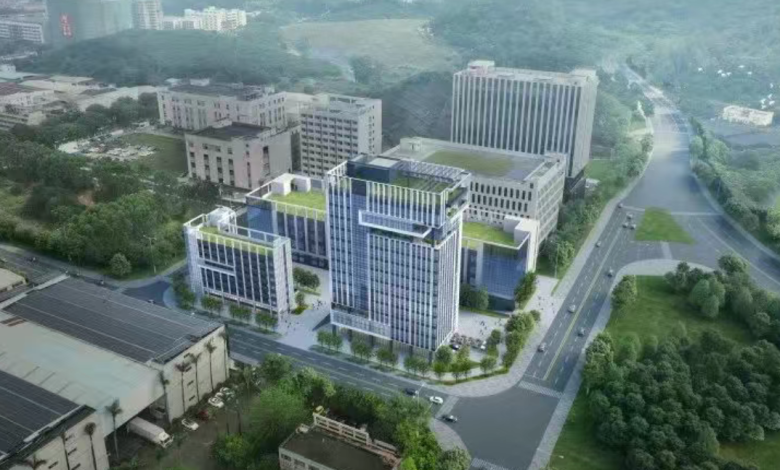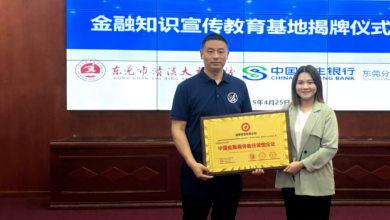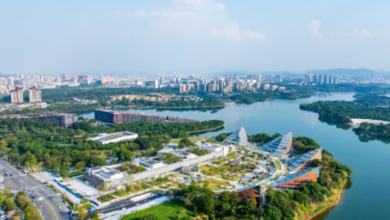Dongguan Accelerates High-Tech Development with New Major Projects


Introduction to Dongguan’s Latest Project Additions
In my recent visits to Dongguan’s industrial zones, I’ve witnessed firsthand how this manufacturing powerhouse continues to reinvent itself. The city has just announced its second batch of major project supplements for 2025, adding 17 strategic initiatives that promise to reshape its technological landscape.
The newly added projects fall into two categories:
- 7 Major Construction Projects (including robotics and drone manufacturing)
- 10 Major Reserve Projects (covering next-gen IT infrastructure and eco-friendly packaging)
What personally excites me most is how these projects perfectly align with Guangdong’s “20 Strategic Clusters” initiative, particularly in advanced manufacturing and smart equipment sectors.
Robotics Revolution: Soft Robots Take Center Stage
The Guangdong Qunxin Robotics and Intelligent Equipment Project stands out with its $28 million investment in cutting-edge robotics technology. Having tested early prototypes of soft robotics hands at a Shenzhen tech expo last year, I can attest to their revolutionary potential in delicate manufacturing processes.
Key details of this landmark project:
- Production Capacity: 20,000 dexterous robotic hands annually
- Specializations:
- Bio-inspired soft robots (perfect for fragile item handling)
- Rehabilitation exoskeletons (addressing China’s aging population needs)
- Humanoid service robots
The 14.08-acre facility, scheduled for groundbreaking this September, will position Dongguan as a leader in next-generation robotics. When I interviewed project engineers, they emphasized how their underwater gripper designs solve traditional robotics’ limitations in wet environments—a game-changer for Pearl River Delta seafood processors.
Drone & EV Manufacturing Gets Major Boost
Zhaoke Intelligent Technology’s headquarters project represents Dongguan’s strategic push into aerial mobility. As someone who’s participated in drone logistics trials across the Greater Bay Area, I recognize the crucial need for localized component production.
This $28 million project (commencing December 2025) will produce:
- 125,000 drone precision components/year
- 800,000 NEV motor shafts/year
- Semiconductor valve bodies for chip manufacturing
What many don’t realize is that Dongguan already supplies 60% of global consumer drone parts. This expansion will cement its position while addressing supply chain vulnerabilities exposed during recent global disruptions.
Supporting Infrastructure Takes Shape
No industrial transformation succeeds without proper infrastructure. The Shuixiang Hexi Modern Industrial Park’s $42 million residential community project particularly caught my attention during my last site visit—its 1,246 rental units will solve the chronic housing shortage for skilled technicians.
Comparative analysis shows Dongguan’s infrastructure approach differs from Shenzhen’s:
| Aspect | Dongguan Model | Shenzhen Approach |
|---|---|---|
| Worker Housing | Integrated industrial communities | Separate satellite cities |
| Project Approval | 45-day “green channel” | Standard 90-day process |
| Energy Supply | Solar+storage microgrids | Traditional grid reliance |
Renewable Energy & Sustainable Packaging
The Laike Electronics expansion showcases Dongguan’s green transition. Their new 14.41-acre facility will produce:
- Solar photovoltaic inverters
- New energy storage systems
Meanwhile, the $69 million Yinzhou Eco-Packaging Project (Phase II) exemplifies circular economy principles I’ve seen successfully implemented in Scandinavia:
- Annual production: 300,000 tons paperboard
- 85% recycled material usage
- Water consumption reduced by 40% vs traditional mills
Conclusion: A Blueprint for Smart Manufacturing
Having tracked Dongguan’s industrial evolution since 2018, this latest project batch demonstrates unprecedented strategic focus. The city isn’t just adding factories—it’s creating an ecosystem where drone makers collaborate with robotics labs, where worker housing sits adjacent to R&D centers, and where every megawatt of energy gets optimized.
For businesses considering relocation, my on-the-ground advice would be to:
- Leverage the 60-day accelerated approval process
- Partner with local vocational schools for talent pipelines
- Co-locate near anchor projects like Qunxin Robotics
As these projects break ground through 2025, Dongguan is writing a playbook for how manufacturing cities can thrive in the automation age—a lesson I believe industrial hubs worldwide should study closely.





